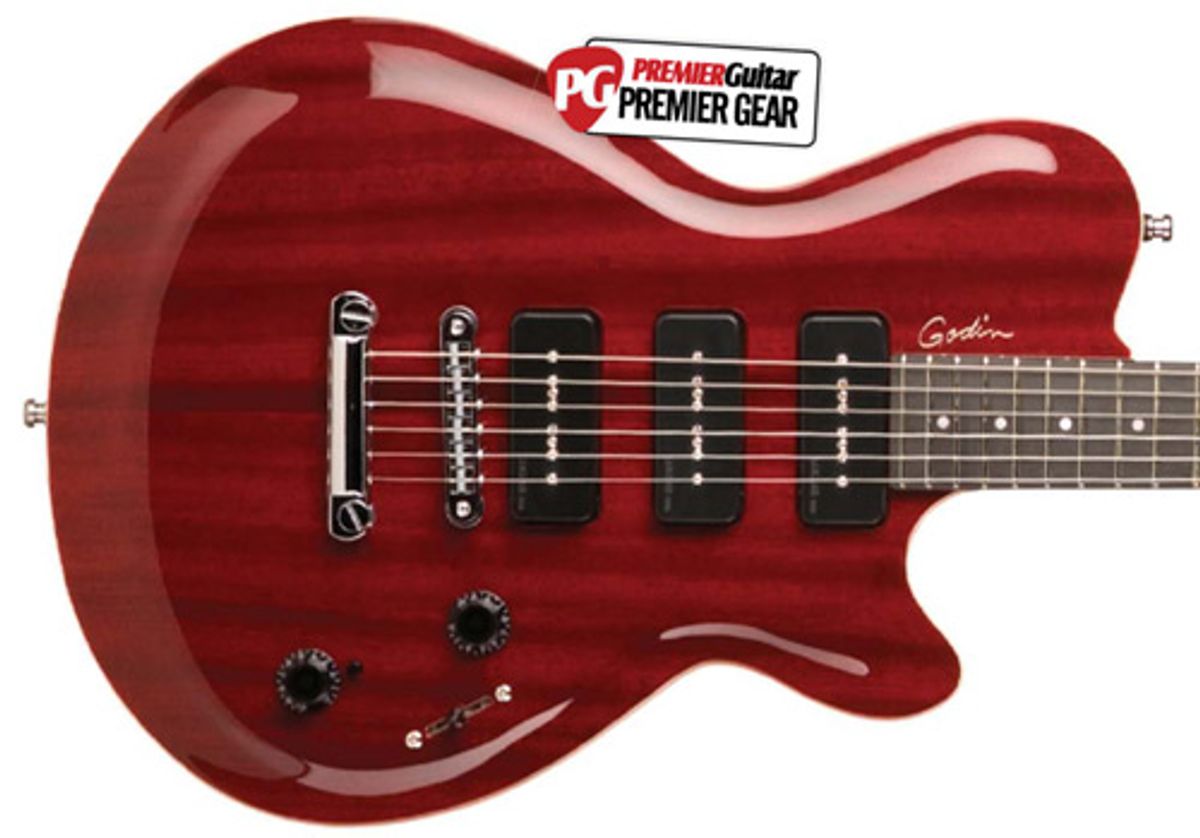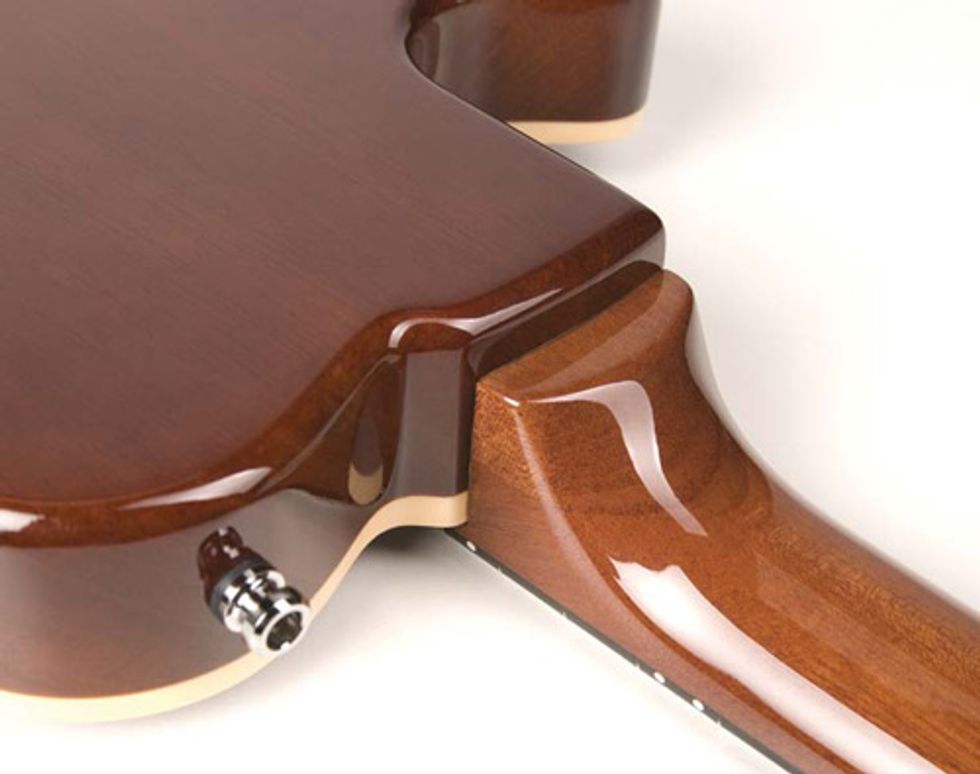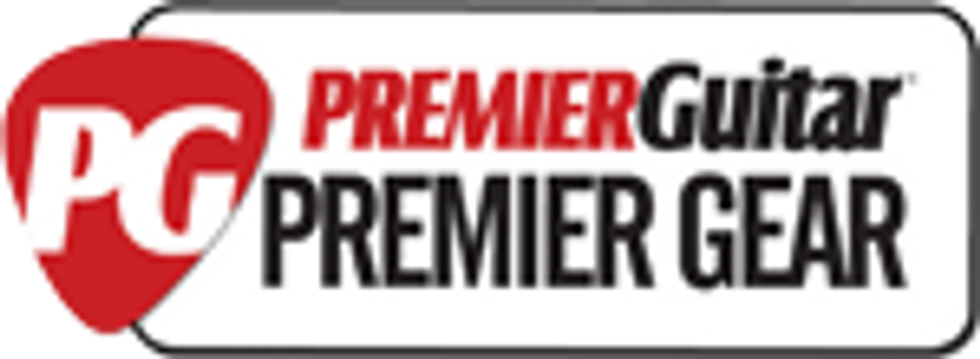
Versatile solidbody with Lollar pickups and High-Definition Revoicer
| Download Example 1 Neck Pickup, with High-Definition Revoicer first OFF, then ON |
|
| Download Example 2 Toggling through all 5 pickup settings, starting with Neck Pickup thru to Bridge Pickup, with High-Definition Revoicer ON |
|
| Download Example 3 Neck and Middle Pickups, with High-Definition Revoicer OFF |
|
| Download Example 4 Bridge Pickup, with High-Definition Revoicer OFF |
|
| Download Example 5 Neck Pickup, with High-Definition Revoicer first OFF, then ON |
|
| Download Example 6 Middle Pickup, with High-Definition Revoicer first OFF, then ON |
|
| Clips recorded through Paul Reed Smith 30 amp, Shure SM57 Microphone, Avid Pro Tools | |
Mahogany Marvel
The ICON Type 3 features a chambered solid mahogany body with a carved mahogany top and a 22-fret set mahogany neck with a 16"-radius ebony fretboard and a 24 ¾" scale. The Type 3 sports a Graph Tech ResoMax bridge with graphite saddles and a Graph Tech Tusq nut, and its three P-90s pickups are selected with a 5-way switch and signed on the back by Jason Lollar.
The ICON Type 3, like the other guitars in the series, feature Godin’s High Definition Revoicer (H.D.R.) system, which allows you to go from passive to active circuitry with the push of a button to change the tonal characteristic of each pickup.
Our review model came with a flawless Burgundy finish (Type 3s are also available in Natural and Black) that complimented the smooth, curvaceous body. The neck joint on this guitar is exceptionally clean and unmarred by any finish buildup. Godin achieves this bit of mojo by finishing the body and neck separately and applying a single, thin coat of finish once they are joined.
Room to Range
I had a rehearsal the same day I received the Type 3, so it was a perfect opportunity to try it out. I was especially curious about how the H.D.R. electronics would sound and operate. So I plugged into a Mesa/ Boogie Dual Rectifier with a Trace Elliot 4x12 cabinet and set up the rig for some clean, funky, syncopated rhythm playing. With the ICON Type 3, I found that the neck pickup with the H.D.R. on provided the full sound I needed, with extra brightness to cut through the band mix.
Because the H.D.R. gives you the freedom to go between active and passive, its five pickup positions yield 10 different tonal options. H.D.R. is not a booster, but it definitely gives the tone a more responsive, punchier quality. It also adds more presence and brilliance, and really brings out the percussive side of syncopated riffs. And for passages that called for a more acoustic sound, I used the middle or bridge pickups with the H.D.R. engaged to get a clearer, brighter tone.
The tone knobs on some guitars have a limited range, but the ICON Type 3’s tone knob has an exceptionally wide range and sounds better than I’ve heard on many more expensive guitars. I found that if I was playing with the H.D.R. on and the guitar sounded too bright, I could roll back the tone slightly for a nice balance of clarity and fullness.

I didn’t keep the H.D.R. on all the time, however. For rock playing with overdrive, I let the Lollar P-90’s creamy, midrange tone sing without any additional enhancement. If I did want an extra push, I would switch on the H.D.R., effectively scooping the mids for more cut during rhythm playing and a little more bite and gain for lead playing. With or without the H.D.R., the Lollar P-90s had me hooked with their balance of midrange, clarity, and warmth. These pickups inhabit an ideal sonic space that’s brighter than a humbucker, yet has a fatter, thicker tone than a traditional single-coil that breaks up very smoothly with distortion.
Perfectly Weighty
The ICON Type 3 just feels like a solid, well-built guitar. It does have some heft attributable to the mahogany body, but the chambered construction makes it lighter and less back-breaking than some Les Pauls. The chambered body also expands the guitar’s tonal range considerably, combining a solidbody’s concise attack with a resonance and ring that’s apparent even when you play the guitar unplugged.
The Graph Tech ResoMax bridge and dense ebony fretboard definitely contribute to the guitar’s richness, sustain, and snap. And its action was perfect, right out of the case—high enough to do some deep bends, but low enough to really shred if I wanted to. The neck profile wasn’t too fat or thick, and suited my grip and playing style just fine.
The Verdict
The ICON Type 3 is a sophisticated instrument with high-quality features and exquisite looks. With its impressive sonic versatility and quality components, it’s certainly a guitar that can give other set-neck mahogany electrics a run for their money. And given the advantage the ICON Type 3 has in terms of price, versatility, and quality electronics like Lollar pickups and the H.D.R. High-Definition Revoicer, the ICON has the potential to become a standard, even an icon, in the years to come.
Buy if...
you’re looking for top quality and versatility in a package that looks more expensive than it is.
Skip if...
only a snappy bolt-on solidbody will do.
Rating...

|
Steet $1395 - Godin Guitars - godinguitars.com
|



